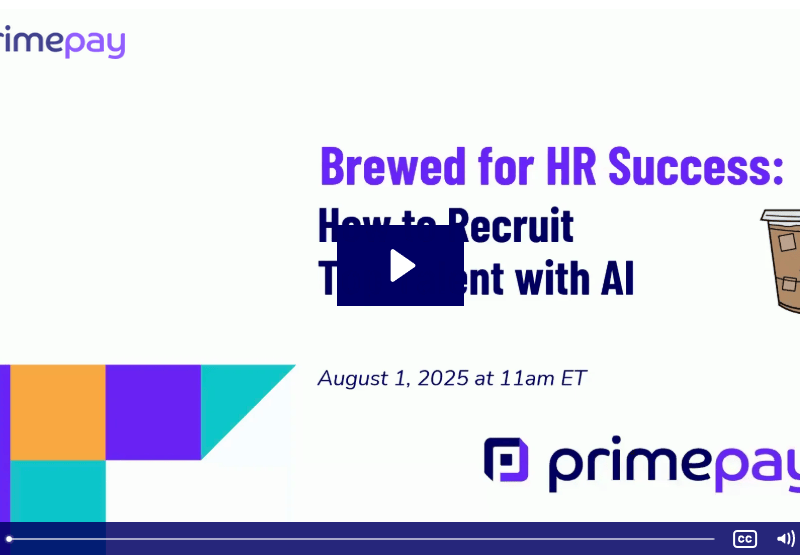Health insurance premiums are on the rise, making it difficult for small businesses to continue to provide and pay for insurance.
According to Kaiser Family Foundation, from 2007 to 2017, single coverage annual premiums rose 49% to $6,690 and family coverage premiums rose 55% to $18,764.
Due to this, according to SHRM, there has been a steady decrease over the last five years when it comes to medical flexible spending account (FSA) offerings. Health reimbursement arrangement (HRA) offerings have remained steady, while health savings accounts (HSAs) have grown dramatically.
If you, as an employer, are offering group health insurance, consider how a pre-tax benefit account can be easily incorporated into your overall benefit program. As out-of-pocket expenses (deductibles, co-pays, etc.) are on the rise, take a second to think about how these pre-tax accounts can help your employees, and in turn, benefit your business. We will discuss the three most popular accounts below.
Health Flexible Spending Accounts (Health FSAs)
A health FSA is an employer-sponsored plan that reimburses out-of-pocket medical expenses for participants and their families. It is voluntary, meaning the participant can choose if they want to fund the account with pre-tax dollars.
Remember, this is a flexible spending account, so funds are meant to be used within a plan year. Generally, the plan year must be a fixed 12-month period.
There are two types of health FSAs you can elect to sponsor:
- General purpose health FSAs can be used to reimburse all medical expenses defined under Internal Revenue Code section 213(d). These accounts are used to pay for things such as deductibles, co-pays, prescriptions, eyeglasses, and orthodontia expenses.
- Limited purpose health FSAs can only be used to reimburse dental, vision, and preventive care expenses.
The health FSA maximum annual contribution limit set by the Internal Revenue Service (IRS) is indexed annually for inflation. In 2019, the health FSA maximum contribution limit is $2,700. There is no separate family maximum, however, if two spouses both contribute to separate health FSAs, they may each contribute up to $2,700 each.
Health FSAs are subject to the use-or-lose rule. This means that any funds not used during the plan year will be forfeited to the employer. Luckily, the IRS allows two exceptions to this rule: the rollover or grace period.
- Rollover: if all the money is not used by the end of the plan year, $500 can be rolled over into the next plan year;
- Grace period: extends the plan year by an additional two and a half months, allowing the participant extended time to incur expenses to pay down the previous year’s balance.
An employer is not required to implement either of these provisions, but it cannot choose both. If an employer decides to offer a rollover or grace period, it must be included in their plan document.
An employer can also implement a run-out period in connection with either a rollover or grace period. This provision allows participants additional time to submit claims incurred during the plan year and must be included in their plan document
Health FSA Benefits Process
The benefit process under an FSA is quite simple. To start, the participant will need to elect an amount to contribute annually to the account. This amount will be prorated as salary reductions throughout the plan year. Because of the use-or-lose rule, participants should be careful to estimate expenses prior to making their election. Once the participant selects the amount, they are only allowed to change their election during the plan year if they experience an election change event permitted by the IRS (ex. the birth of a child).
The good news for employees is that with a health FSA, the participant has access to the entire balance elected as of the first day of the plan year. This is called the uniform coverage rule.
FSA Compliance Checklist
Like other cafeteria plans, health FSAs are subject to documentation requirements. Employers are required to have a written plan document and summary plan description, which must be distributed to all participants.
Health FSAs:
- Must complete annual nondiscrimination test (NDT), which needs to be completed during the plan year.
- Health FSA contributions must be included in the section 125 testing; in addition, health FSAs are subject to testing under section 105.
- Are subject to COBRA. A special limited COBRA obligation may apply if the FSA qualifies as an excepted benefit.
- Under this limited obligation, an employer must only offer COBRA for the health FSA if the participant has a positive account balance at the time of their qualifying event.
- A health FSA will qualify as an excepted benefit if the maximum annual benefit does not exceed two times the participant’s salary reduction election (or $500, if greater) and the employer sponsors a traditional group health plan; or the health FSA only reimburses limited benefits (such as dental and vision).
- In addition, the employer can terminate their COBRA coverage for the health FSA at the end of the plan year in which the qualifying event occurred.
- Under this limited obligation, an employer must only offer COBRA for the health FSA if the participant has a positive account balance at the time of their qualifying event.
- Must be paired with a group medical plan to satisfy the requirements of health care reform.
- Employers that do not sponsor a group health plan are not eligible to sponsor a health FSA, unless it is a limited purpose benefit (ex. only reimbursing dental, vision, and preventive care expenses).
- In addition, the employer should be careful to limit eligibility in a general-purpose FSA to those individuals eligible for the group medical plan.
- Are considered a group health plan and, as such, are subject to the reporting and disclosure requirements under the Employee Retirement Income and Security Act of 1974 (ERISA). Are subject to PCORI fees, as a self-insured group health plan.
- The Patient-Centered Outcomes Research Institute (PCORI), is a nonprofit corporation created by health care reform to support clinical effectiveness research.
- Health FSAs will be exempt from PCORI fee requirements if it qualifies as an excepted benefit.
- PCORI fees are due by July 31st of the year after the plan year ends. PCORI fees are expiring this year, for plans ending on or after October 1, 2019.
Health Savings Account (HSA)
To contribute to an HSA, an individual must be enrolled in a qualified high deductible health plan (QHDHP) and no impermissible coverage. While HSAs are individual accounts, employers may choose a bank custodian and allow employees to fund their account pre-tax through the section 125 plan.
An HSA has many benefits:
- Triple-tax advantage: Enables an individual to put money into the account on a pre-tax basis, allows the money within the account to grow tax-free, and enables the employee to take out the money tax-free for qualified expenses.
- Revocable elections: Unlike an FSA, where the elections are generally irrevocable during the plan year, HSA elections may be changed much more easily.
- Generally, pre-tax HSA contributions can be changed at any time during the plan year, before those funds are made available to the employee.
- Unlimited rollovers: Regardless of the amount of money that you have in your HSA, you can roll it over year after year.
- The use or lose rule does not apply because the account is owned by the participant, not the employer. Because of this, an HSA can easily be used to save for medical expenses in retirement.
- Zero reimbursement cutoff date: FSA reimbursements are limited by the plan year, run-out, rollover, or applicable grace period. With an HSA, there is no cutoff date.
- Medical expenses can be reimbursed immediately after the date of service or even years later!
- Portability: An HSA is an individual account that can move company-to-company since it is owned by the employee.
- Survives the owner: The owner of the HSA can pass down their HSA contributions when they die.
- Flexible distributions: unlike a health FSA or HRA, HSA benefits can be used on expenses that don’t qualify as medical care.
- While this is permitted, these nonqualified distributions will be subject to income tax and, if the participant is under age 65, an additional 10% excise tax.
HSA: Maximize for Savings
As an FSA is labeled as a spending account, an HSA is a savings account. If an employee is saving roughly 20% by contributing to an HSA, every $100 they contribute to the plan is saving them $20.
But don’t forget about the employer! The employer also saves big with a 7.65% FICA tax saving, meaning that when the employer contributes $100, they are saving $7.65.
Of course, an HSA doesn’t allow you to deposit an unlimited amount of money into a triple-tax advantage account. The 2019 annual maximum contribution amount for singles is $3,500, which can equate to $700 in savings. For families, $7,000 is the 2019 annual maximum contribution limit, which can have savings of $1,400 or more depending on the individual’s tax bracket. For 2020, those limits are $3,550 and $7,100, respectively.
HSA: Incorporating into Your Business
Businesses can incorporate HSAs as a tax deferral and investment opportunity. Think about an HSA as a future expense account (like a 401(k) or 403(b)) and incorporate education in your HSA that is tied around retirement.
The maximum contribution for a 401(k), 403(b), or 457(b) contribution is $19,000 per year. But if your business elects to offer an HSA, participants have the opportunity to contribute an additional $3,500 or $7,000 to an HSA, which could make total retirement savings for a year equal $26,000, pre-tax.
HSA: Compliance Checklist
Today, over one-third of employers offer employer contributions, according to SHRM. In the early periods of offering an HSA, many employers chose to make contributions to their participants’ HSAs to start building on their future.
- If an employer contributes through a section 125 plan, those amounts will be subject to NDT.
- Employer after-tax contributions will be subject to the comparability rules.
- Any employee pre-tax contributions to the account must be included in the employer’s annual NDT.
- For employees to make pre-tax contributions into an HSA, it must be done through a cafeteria plan.
- When many employers add an HSA to their benefit offerings, they forget to update their cafeteria plan documents to incorporate this benefit.
Adoption note: Employers can help employees by choosing a custodian bank to open their HSA. Employees are less likely to open an HSA when it is left up to them to find a bank.
Health Reimbursement Arrangement (HRA)
Another pre-tax account that can be used to pay for qualified medical expenses is the HRA, a flexible benefit that can be offered by any size employer. An HRA is a self-funded health plan that can only be funded by the employer. No employee salary reductions are permitted.
A traditional HRA must be paired with a group medical plan to satisfy the requirements of health care reform. Employers that do not sponsor a group health plan are not eligible to sponsor this type of HRA.
The beauty of the HRA is that it gives you the ability to control the financial risk. It is also tax-free to employees and tax-deductible for employers. The HRA has the most flexibility of any pre-tax account we have previously discussed. As the employer, you choose the amount of the benefit, the eligible expenses for reimbursement, and whether to include a rollover provision.
For example: Let’s say an employer chooses a high deductible health plan with a $2,000 deductible for a single employee, which should allow them to have a lower premium. The employer realizes it is a very high cost for the employees to pay out of pocket, so he decides to open an HRA to help reimburse deductible expenses. To limit the employer’s exposure, the employee will be responsible to pay the first $500 of the deductible and the employer will cover the remaining $1,500.
Although this HRA plan type is the most common, there are six different ways that HRAs can be structured.
Six HRA Plan Types
There are currently six different plan types for HRAs, with two of them being brand new additions:
- An HRA integrated with a group health plan (mentioned above).
- Limited purpose HRA: dental and vision only.
- Retiree HRA.
- Qualified small employer HRA (QSEHRA).
- Individual coverage HRA (ICHRA).
- New HRA option available on Jan. 1, 2020.
- Excepted benefits HRA (EBHRA).
- New HRA option available on Jan. 1, 2020.
A QSEHRA is a useful tool for non-applicable large employers (less than 50 full-time and full-time equivalent employees) to help employees pay for health coverage and out of pocket expenses. Some additional details:
- Employers are only eligible to sponsor a QSEHRA is they do not sponsor any other form of group health plan (including dental or vision) and employees must be enrolled in some form of minimum essential coverage (MEC) to be eligible for reimbursements.
- QSEHRA is limited in 2019 to $5,150 for single only and $10,450 for family coverage.
Two new HRAs that were introduced by the Departments of Health and Human Services (HHS), Labor (DOL), and the Treasury (IRS) on June 13, 2019.
- ICHRAs can be used to reimburse premiums for individual health insurance by employees not offered coverage under an employer group health plan.
- This is useful if an employer offers a group health plan but has an employee class carved out from eligibility under their plan, like part-time or seasonal employees.
- This type of HRA can be used for qualified medical expenses, including individual medical insurance and Medicare premiums.
An EBHRA is the second new alternative to traditional group health plan coverage, subject to certain conditions. Some additional details:
- It allows employees that are eligible for an employer group health plan to be reimbursed up to $1,800 annually pre-tax, even if they don’t enroll in the group health plan.
- This type of HRA can be used for qualified medical expenses, including premiums for vision and dental insurance, COBRA continuation coverage, and in some circumstances short-term, limited-duration insurance (STLDI).
Additional guidance is coming soon from the IRS regarding several outstanding issues, such as a safe harbor for ICHRAs with regards to the Affordable Care Act (ACA) requirements of affordability and minimum value.
HRA: Benefits Process
Since an HRA is 100% employer-funded, the employer is in complete control of the benefit plan offered. For those HRAs integrated with an employer-sponsored group health plan, the employer needs to choose the health plan they are willing to offer.
In addition, an employer sponsor of any type of HRA will need to choose the expenses to reimburse, the limit and if participants will be able to rollover money. As participants incur specific expenses, they submit the expenses and get reimbursed directly from the employer.
HRA: Compliance Checklist
What type of compliance measures should you consider with an HRA?
- HRAs must have proper plan documentation in place, including a written plan document and summary plan description distributed to participants.
- HRAs are considered a group health plan and are subject to the reporting and disclosure requirements under ERISA.
- Annual NDT needs to be completed during the plan year. While HRAs are not included in the section 125 testing, HRAs are subject to testing under section 105.
- Virtually all HRAs are going to be COBRA-qualified.
- An employer subject to COBRA must pay attention to ensure that participants experiencing qualifying events are supplied with the proper notices.
- As a self-insured group health plan, HRAs are subject to PCORI fees.
- HRAs will be exempt from PCORI fee requirements if it qualifies as an excepted benefit. An HRA only qualifies as an excepted benefit if either the maximum benefit is not greater than $500 or it only reimburses limited scope benefits (like dental or vision).
- HRAs are subject to some ACA requirements, which include specific Form W-2 reporting, and annual distribution of a summary of benefits and coverage (SBC).
As a reminder, Medicare is the United States’ health insurance program for people age 65 or older. It is a federally funded benefits program that is taxed equally to the employee and employer as payroll deductions.









